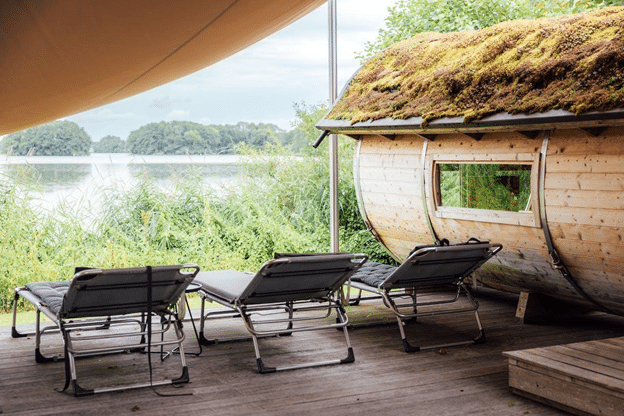Creating a garden that is not only aesthetically pleasing, but also sustainable and eco-friendly is becoming increasingly popular. As awareness of our environmental footprint grows, more people are turning to sustainable gardening techniques. These practices not only help in conserving resources but also ensure that your outdoor space contributes positively to the ecosystem. From water conservation to the use of non-toxic materials, we will explore 10 methods to create an eco-conscious garden.
Investing in eco-friendly garden features
When considering garden features such as lighting, furniture, it is essential to select options that uphold your garden’s sustainable ethos. The best outdoor saunas, for instance, can be both a luxurious addition to your garden and an element of your eco-conscious design if chosen correctly. Look for saunas made from sustainably sourced wood and featuring energy-efficient heating systems. These can provide a restful retreat that aligns with your commitment to the environment.
Embracing permaculture principles
Permaculture is a holistic approach that works with natural forces – wind, sun, and water – to provide food, shelter, water, and everything else your garden needs in a sustainable way. It emphasizes the design of ecological landscapes that produce food and is based on the harmonious integration of the land with its inhabitants. By mimicking patterns found in nature, permaculture creates resilient and self-maintaining ecosystems.
Selecting native plants
Choosing native plants for your garden is crucial for sustainability. These plants have evolved to thrive in the local climate and soil conditions, which means they require less water, fewer fertilizers, and less effort to maintain. They also provide essential habitats for local wildlife, creating a bio-diverse environment that supports birds, bees, and other beneficial creatures.
Conserving water with smart techniques
Water conservation techniques like rainwater harvesting, drip irrigation, and using mulches are key aspects of a sustainable garden. Rainwater harvesting involves collecting and storing rainwater for garden use, reducing the dependence on municipal water supplies. Drip irrigation delivers water directly to the roots of plants, minimizing waste, while mulches help retain soil moisture and reduce water evaporation.
Incorporating organic and recycled materials
A true eco-conscious garden avoids the use of harmful chemicals and makes use of organic and recycled materials whenever possible. Composting kitchen scraps and yard waste not only reduces landfill use but also creates a nutrient-rich soil amendment. Utilizing recycled materials for garden infrastructure and decorations keeps waste out of the environment and adds a unique charm to your outdoor space.
Building with green materials and techniques
Structures within your garden, from trellises to patios, should be constructed using green materials and methods to minimize environmental impact. Reclaimed wood, natural stone, and recycled brick offer rustic charm and durability while also being kinder to the planet. Sustainable garden design also entails using construction techniques that do not disturb the natural soil structure or drainage patterns.
Attracting wildlife with habitat features
Creating a garden that invites wildlife is not just about planting flowers; it involves providing shelters, water sources, and nesting areas. Birdhouses, insect hotels, and native shrubberies can all be incorporated into garden design to create a sanctuary for various species. The presence of wildlife not only adds to the natural beauty of your space but also contributes to the ecological health of the garden.
Using renewable energy sources
Solar panels and wind turbines can power garden features, from lights to water pumps, with renewable energy. The use of these technologies reduces reliance on fossil fuels and ensures that your garden leaves a minimal carbon footprint.
Ensuring year-round interest
A sustainable garden should captivate and inspire regardless of the season. By carefully selecting a variety of plants that bloom and thrive at different times of the year, you create a space that is constantly evolving and always interesting. This encourages continuous engagement with the garden and reinforces the commitment to a living space that is sustainable year-round.
Reflecting and adapting
Lastly, a key aspect of sustainable garden design is to be reflective and adaptable. As the climate changes and new best practices emerge, it is crucial to be willing to adjust your methods and designs. This could mean introducing drought-resistant plant varieties or swapping out less sustainable features for more eco-friendly alternatives.
You are ready to create a good garden design
An eco-conscious outdoor space exemplifies a harmony between nature and human design. By integrating sustainable practices and choosing features that are consistent with these values, you can create a garden that not only brings joy and relaxation but also contributes positively to the health of the planet. With persistent effort and mindful choices, your sustainable garden will be a testament to eco-friendly living.

